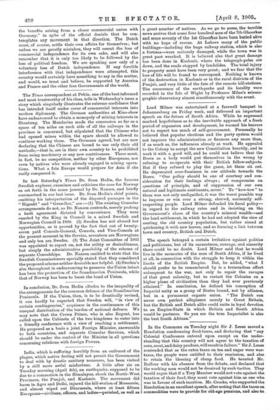India, which is suffering horribly from an outburst of the
plague, which native feeling will not permit the Government to deal with by drastic sanitary measures, has been visited by a still more awful misfortune. A little after six on Tuesday morning (April 4th), an earthquake, supposed to be due to a commotion in the Himalayas, shook the North-West Provinces, the Punjab, and Kashmir. The movement did harm in Agra and Delhi, injured the hill-station of idussoorie, and almost wiped out Dharmsala, where at least fifteen Europeans—civilians, officers, and ladies—perished, as well as
a great number of natives. As we go to press, the terrible news arrives that some four hundred men of the 7th Ghoorkas and some seventy of the 1st Ghoorkas have been buried alive with no hope of rescue. At Lahore many of the public buildings—including the huge railway station, which is also a fortress—were seriously damaged, while the town was in great part wrecked. It is believed also that great damage has been done in Kashmir, where the telegraph-poles are down, and the roads stopped by landslides. The total injury to property must have been very great; and we fear that the loss of life will be found to correspond. Nothing is known of the destruction in Kashmir or in the rural districts of the Punjab, and very little of the fate of the remote hill-stations. The occurrence of the earthquake and its locality were recorded in the Isle of Wight by Professor Milne's seismo- graphic observatory almost simultaneously with the event.










































 Previous page
Previous page